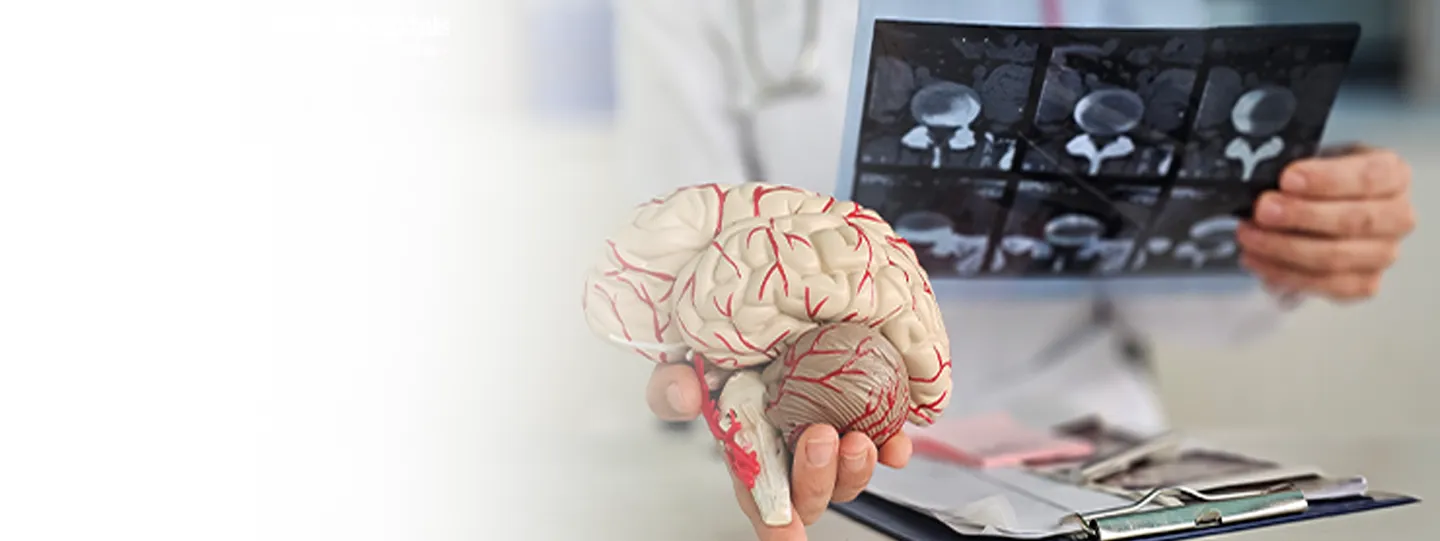

A stroke happens when blood flow to a region of the brain is cut off due to high blood pressure, high cholesterol, etc, so brain cells don’t get the oxygen and nutrients they require.
Due to this inadequate blood supply to brain cells starts to get damaged and can die quickly. This can lead to issues with movement, speech, or thinking.
There are mainly 2 types of stroke:
There are many causes of a brain stroke that lead to blockage in the blood supply to the brain, contributing to a stroke.
Here are some brain stroke potential causes:
Persistent high blood pressure (or hypertension) damages artery walls and may make them more likely to narrow or rupture. This leads to blockage or bleeding in the brain.
Atherosclerosis means fatty plaques pile up inside the arteries. This reduces blood flow or forms clots that block the blood supply to the brain.
Formed clots (embolism or thrombosis) from the heart or neck arteries can enter and block brain vessels, leading to ischemic stroke.
Irregular heartbeats cause blood to pool and form clots. These can then enter the brain’s blood supply and block arteries.
High blood sugar or glucose levels are known to damage blood vessels and speed up atherosclerosis. This can increase the risk of stroke.
Abnormally rigid-shaped blood cells (RBCs) can assemble and block small brain vessels. This leads to strokes, especially in younger patients.
AVMs mean a bulge in a weak area of a blood vessel in or surrounding of brain. If they get a rupture, this can cause a hemorrhagic stroke due to bleeding in the brain. Then it can be a life-threatening situation.
Chemicals from smoking or illegal drugs thicken blood, increase clotting risk, and damage artery walls. This can raise stroke chances.
Note: It is for informational use only. This content is not a replacement for medical advice; a medical professional will determine the exact reasons behind ant stroke case.
The following can be the early symptoms of a brain stroke that you need to be aware of for timely action:
This may happen when a stroke damages pathways controlling movement (motor areas in the frontal lobe).
This could happen when a stroke damages the brain region (left frontal or temporal lobes) that controls language.
This could happen when a stroke damages the brain’s visual processing center (occipital lobe).
This may happen when a stroke damages the brain part (cerebellum) that controls movement and balance.
This may happen when a stroke affects the cognition and processing center of the brain (frontal or parietal lobes).
May indicate a hemorrhagic stroke due to bleeding inside the brain.
Symptoms of a stroke occur when it damages the brain stem, which manages vital functions.
You should seek emergency help when you or someone else shows BE FAST signs of stroke.
Every second matters in a stroke. Recognizing the BE FAST symptoms (Balance, Eyes, Face drooping, Arm weakness, Speech difficulty, and Time) and prevention tips are the key to avoiding brain damage.
Prevention tips for stroke:
And for expert advice, Contact Surya Hospitals, known for its comprehensive stroke care and recovery.
Q1. What are the beginning stages of a stroke?
A: The beginning stages of a stroke may include (BE FAST symptoms):
Q2: What is stage 1 of stroke?
A: The first stage, right after a stroke, is flaccidity (lacking firmness and being soft). Signs include facial drooping, arm weakness, or slurred speech, which means quick medical help is crucial.
Q3: What are one month before a stroke warning signs?
One month before a stroke, warning signs may include:
These indicate early brain blood flow issues.
